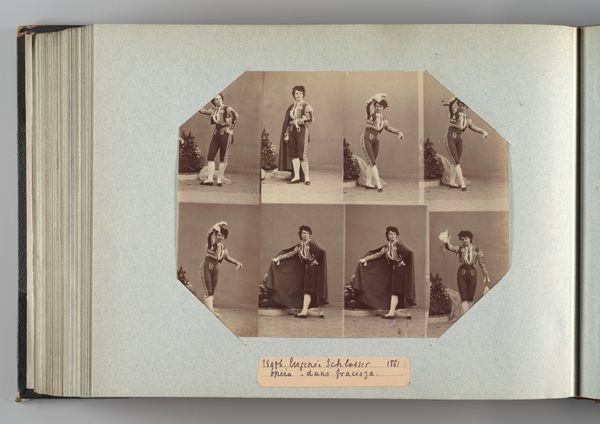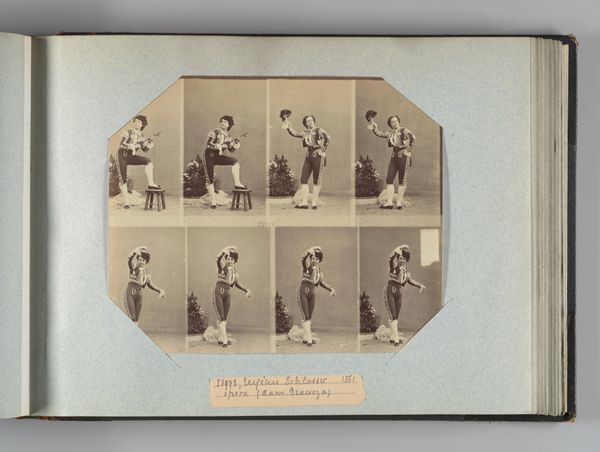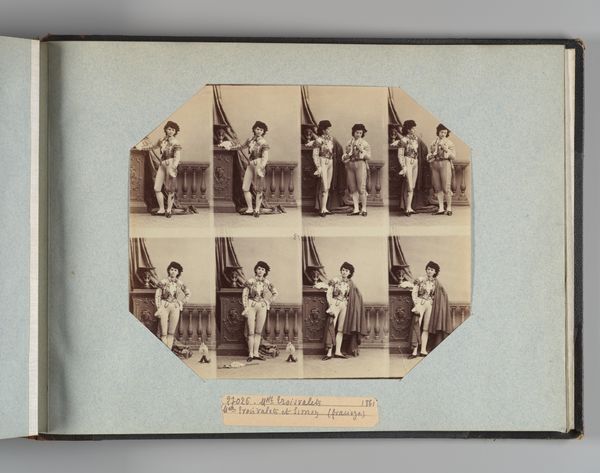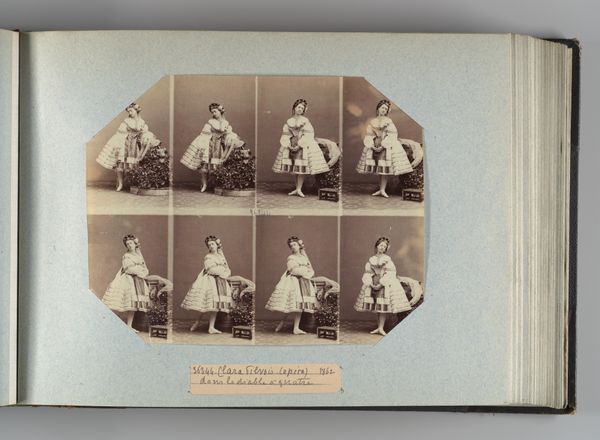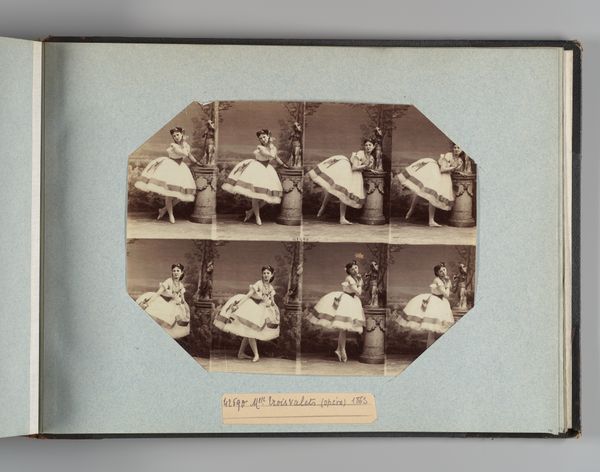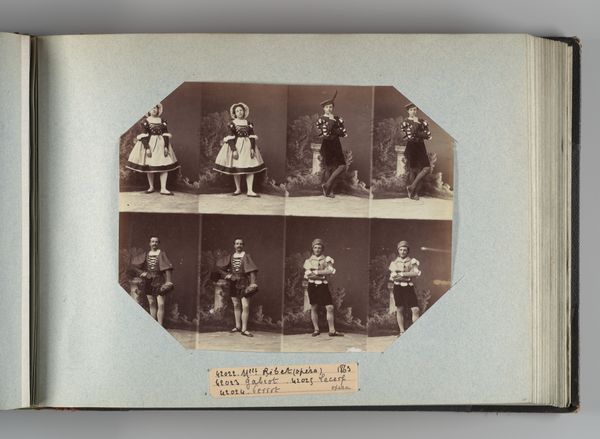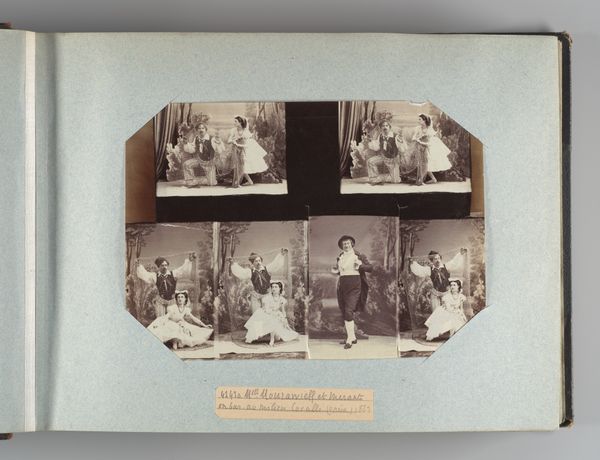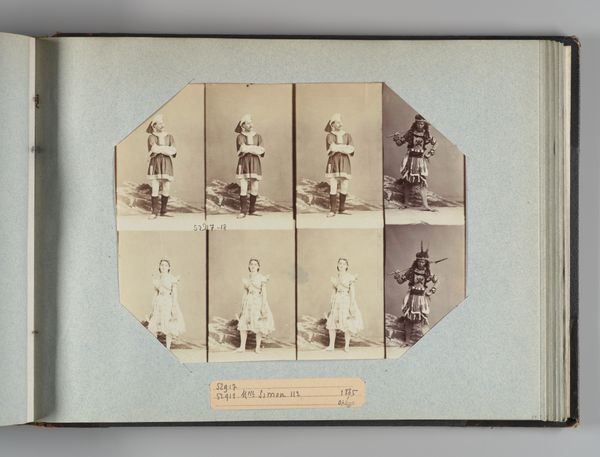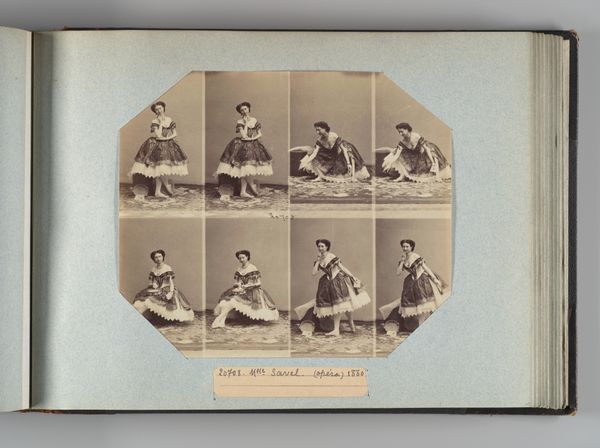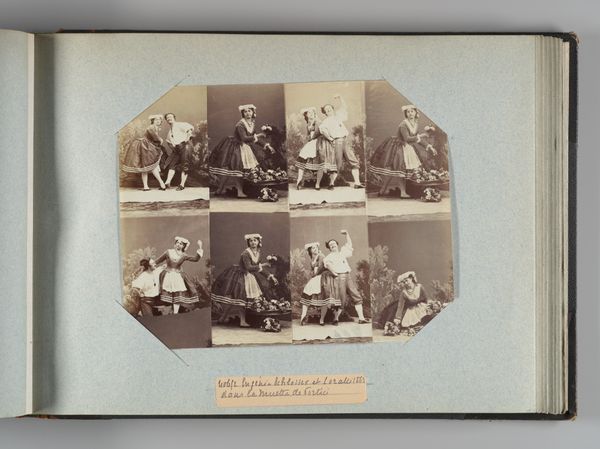
photography
#
portrait
#
photography
Dimensions: Image: 7 3/8 × 9 1/4 in. (18.8 × 23.5 cm) Album page: 10 3/8 × 13 3/4 in. (26.3 × 35 cm)
Copyright: Public Domain
Editor: Here we have André-Adolphe-Eugène Disdéri's "Mlle Rust dans le Diable à quatre," a photograph from 1862. It’s interesting to see these eight different poses laid out together. It almost feels like an early form of animation. How do you interpret this work, and what significance might it hold beyond being a portrait? Curator: It's fascinating, isn’t it? While on the surface, it’s a portrait of Mlle Rust, a dancer, it also embodies a powerful commentary on femininity and performance during the Second Empire. Notice how Disdéri captures Mlle Rust not just in static poses, but in implied movement. What does that communicate to you? Editor: That she’s more than just a pretty face? That there's an agency in performance? Curator: Precisely! The title itself references "Le Diable à Quatre," a popular ballet that revolved around mistaken identities and romantic entanglements. The image could be viewed as a reflection on the commodification of female performers at that time. Disdéri, a pioneer in carte-de-visite photography, essentially democratized portraiture. Considering the accessibility of these images, who do you think had access to them, and what does that reveal? Editor: Maybe that it's not just art for the elite, it allowed more common folk to participate in art. Curator: Exactly. These cartes-de-visite were collected and circulated, effectively turning Mlle Rust into a celebrity, but one whose image was also subject to public consumption and judgment. Consider then the politics of looking, of who gets to see and interpret her image. And how do those politics reflect larger power structures within 19th-century French society? Editor: It brings up a lot to consider, the economics, class, and representation that are layered in this one piece! Curator: It indeed does. Disdéri's photograph offers not only a glimpse into a particular moment in history but also provokes critical inquiry into the intertwined dynamics of identity, performance, and power.
Comments
No comments
Be the first to comment and join the conversation on the ultimate creative platform.
